A basketball-sized dollop of dung steams fresh and fibrous on the asphalt. Its masticated mush is moist and circled by pooling liquid. I squeal with happiness, weaving my front wheel around excreted elephantine emissions. We’ve been dodging dung all morning on this cycling journey, and I can barely contain my excitement. Elephants are revered in Sri Lanka, but they’re also in decline. As I pass the mound, I get a whiff of something akin to recently mown lawn with a feisty, fetid rancidity. If I was a perfumier I’d describe it politely as holding herbivorous hints of earthiness. On the poop scale of nasal repulsion this mighty mound is far from offensive.
Not that I’m any kind of dung expert. I’ll leave that to scatologists who study such matter for a living. Though I confess, scat has been on my mind, and I’ve been taking an unexpected interest in elephantine emanations. But here’s the thing. If you want to see wild animals in the wild doing their wild thing, you need to pay attention to their dung. It’s not what I expected when I signed up for a seven-day cycling tour of Sri Lanka.
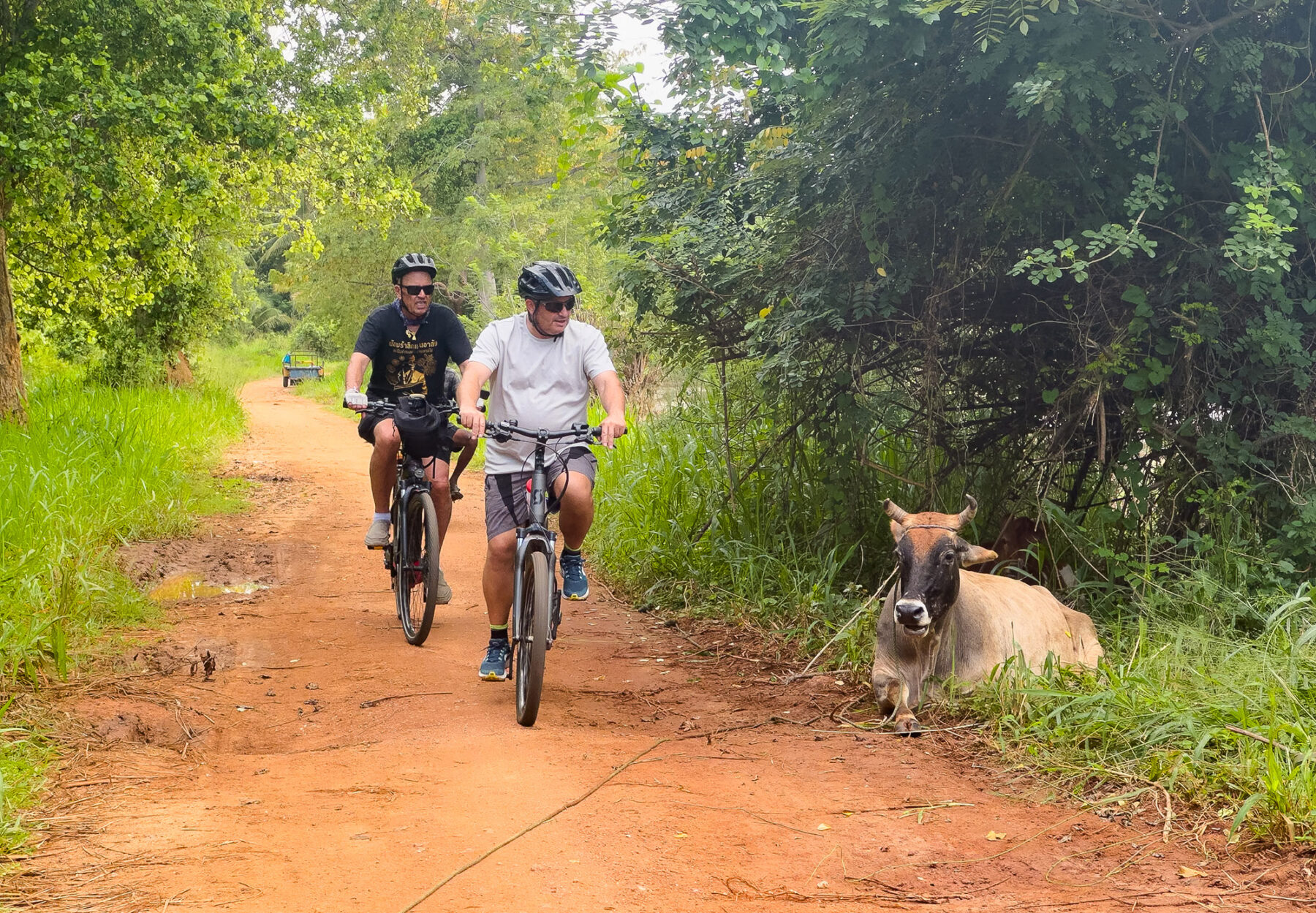
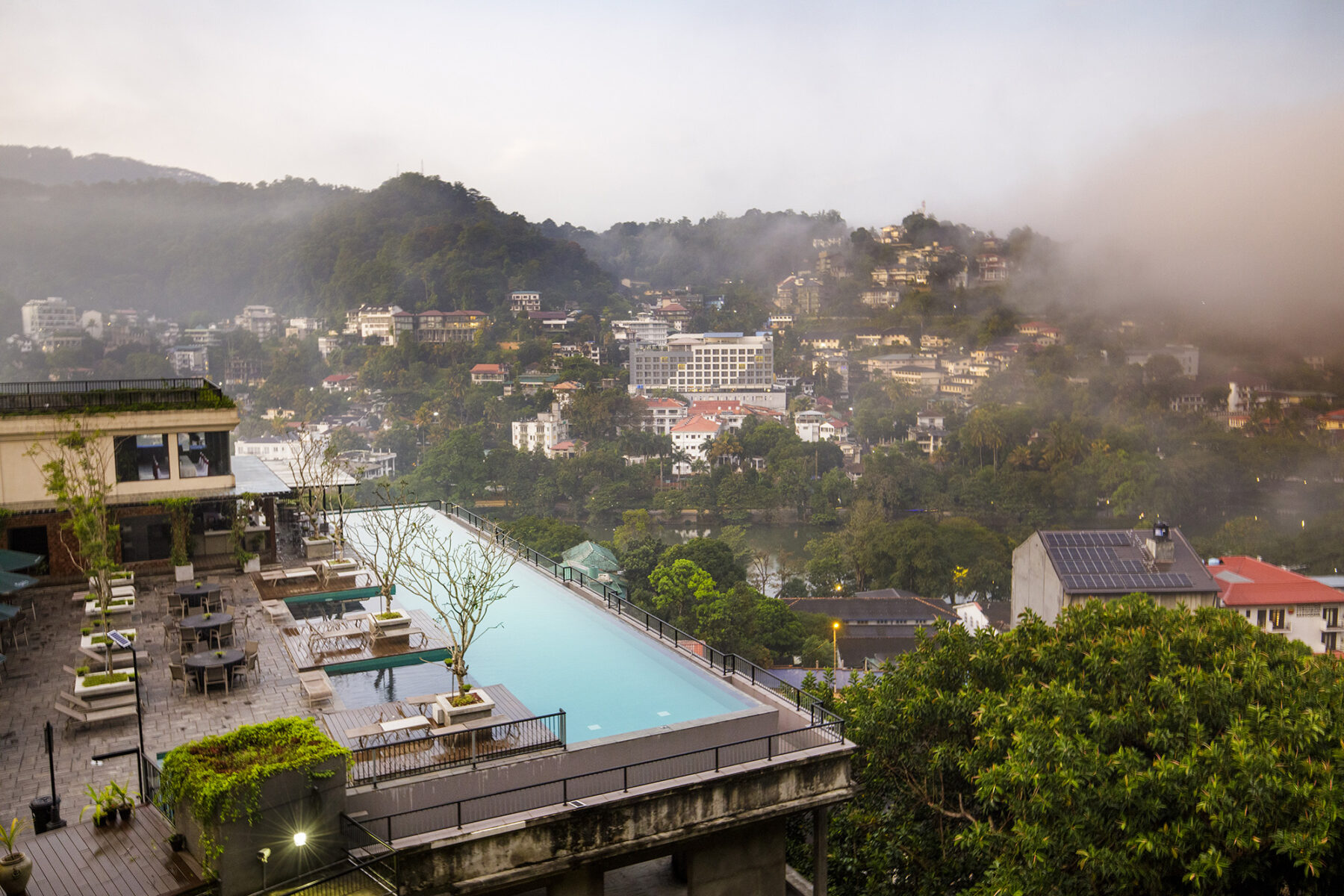
What I was expecting was to see Sri Lanka from the leisurely pace that only bicycle travel offers. Slow travel gained traction post-pandemic, motivating travellers to take time to smell the roses (or the dung in my case) while minimising our environmental footprint. But this is nothing new to those who embrace cycling adventures. Exploring a country by bike gives a unique perspective at grassroots level.
Cycling: how to see the world on two wheels
In his bestselling classic Zen and the Art of Motorcycle Maintenance, Robert M Pirsig talks scathingly of being compartmentalised and seeing the world through a frame when travelling by car as opposed to bike touring. “On a cycle the frame is gone and you’re completely in contact with it all,” he says. “You’re in the scene, not just watching it. This sense of presence is overwhelming.”
It’s exactly how I feel as we saddle up in Negombo to embark on a week-long two-wheeled adventure. Riding along the beachfront we pick our way through fish markets where tables are laden with marine creatures of all sizes harvested from the sea crashing behind vendor stalls. Fishmongers in rubber boots splash their catch, ensuring the pavement underfoot is awash with water and offal. In between the stalls, sun-dried fish fillets are laid out on plastic sheets beneath towering coconut palms.
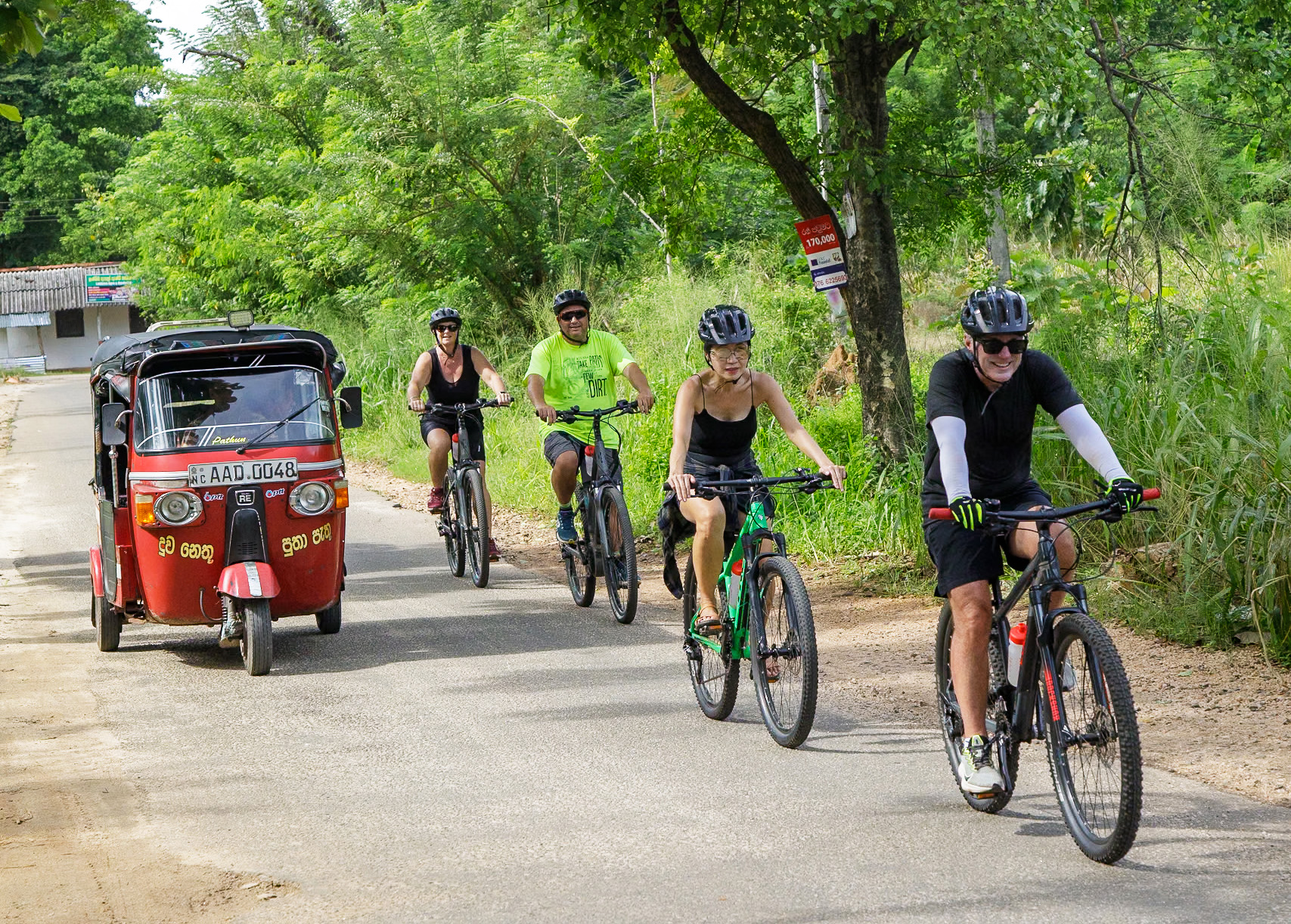
Sri Lanka is made for this type of bike-friendly travel. With our cycle guide, Chamara, along with a coaster bus and driver (Ishun), we mostly ride the backroads and laneways, avoiding main traffic routes, eating at local restaurants, visiting tea plantations or learning about Sri Lanka’s intriguing gemstone mines. The bus follows our progress, carrying our luggage, snacks and bike spares, allowing us the luxury of pedalling and enjoying the sights, while all the pesky logistics are taken care of.
We ride past farmers ploughing fields or transporting produce to market in trailers towed by tractors. We wave to, and laugh with, schoolchildren. We stop at ramshackle roadside stalls where vendors are selling whichever crop they’ve harvested. Weave around straight-backed women balancing shopping on their head. Wake up dogs slumbering supine on the warm asphalt. We constantly slip past tethered cows grazing roadside or a mob being herded by farmers. We dodge their dinner plate-size dung patties. Three-wheeled tuktuks breeze past. Locals on clapped-out bicycles grin at us foreigners wearing colourful lycra and riding fancy mountain bikes. The smiles, the waves and friendly greetings are constant. The kids shouting “hia” are especially exuberant and accompanied by giggles.
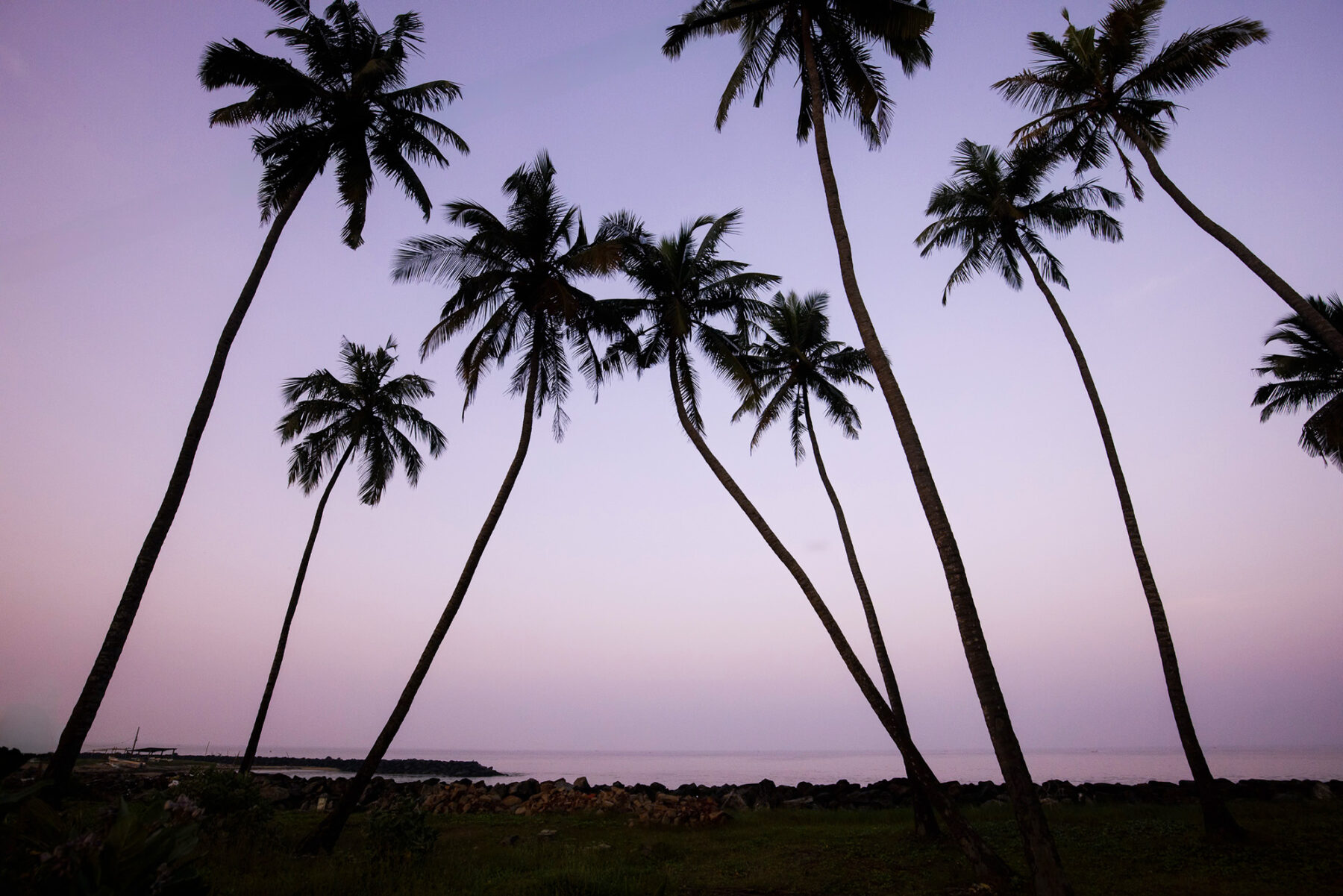
But it’s Sri Lanka’s extraordinary history arcing back eons that captures most of my attention. Ancient ruins. Royal palaces. Implausibly beautiful temples. Through centuries of tumultuous power, political and cultural tussles, Sri Lanka lies at the crossroads of maritime trading routes, a short hop across the Palk Strait from the Indian subcontinent. Its capital has changed 10 times.
Cycling past living history
Anuradhapura was the first capital, retaining the seat of power for 1400 years. Today it’s recognised by UNESCO as one of many Sri Lankan World Heritage sites and is one of the oldest continuously inhabited cities in the world. The city is a living, breathing museum with archaeological digs sitting within urban neighbourhoods. At the end of one day’s ride we visit Ruwanwelisaya Stupa where 360 concrete elephants line its base. Elephants symbolise strength and unity, so it’s no surprise to see them symbolically ‘holding up’ the mammoth temple that is one of Sri Lanka’s most revered spiritual sites.
We cycle atop levees holding back man-made lakes and alongside tall, electrified elephant-proof fences. We wheel through villages, gently ascending into the high country to eventually arrive at Kandy (Sri Lanka’s eighth capital). After checking into our hotel, we walk the short distance to the Temple of the Tooth (Sri Dalada Maligawa) and, after waiting patiently for more than one hour alongside worshippers, we’re rewarded with a brief glimpse of the gilded shrine encasing Buddha’s sacred tooth relic. The 17th century temple sits within an ancient Royal Palace and is one of Buddhism’s most sacred pilgrimage sites. The tooth in question hails from Gautama Buddha, the founder of Buddhism who renounced his princely life and gained enlightenment around 500 BCE.
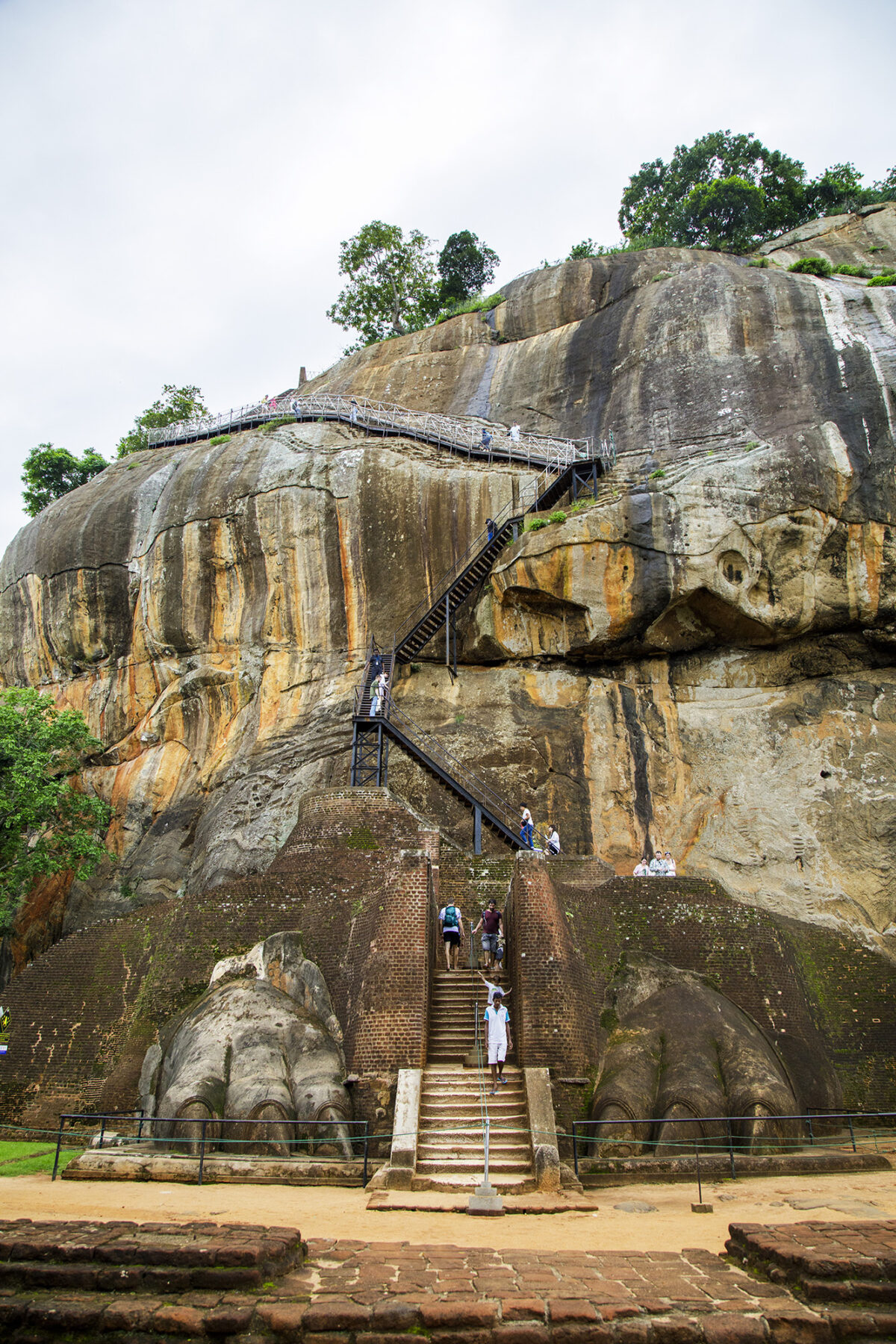
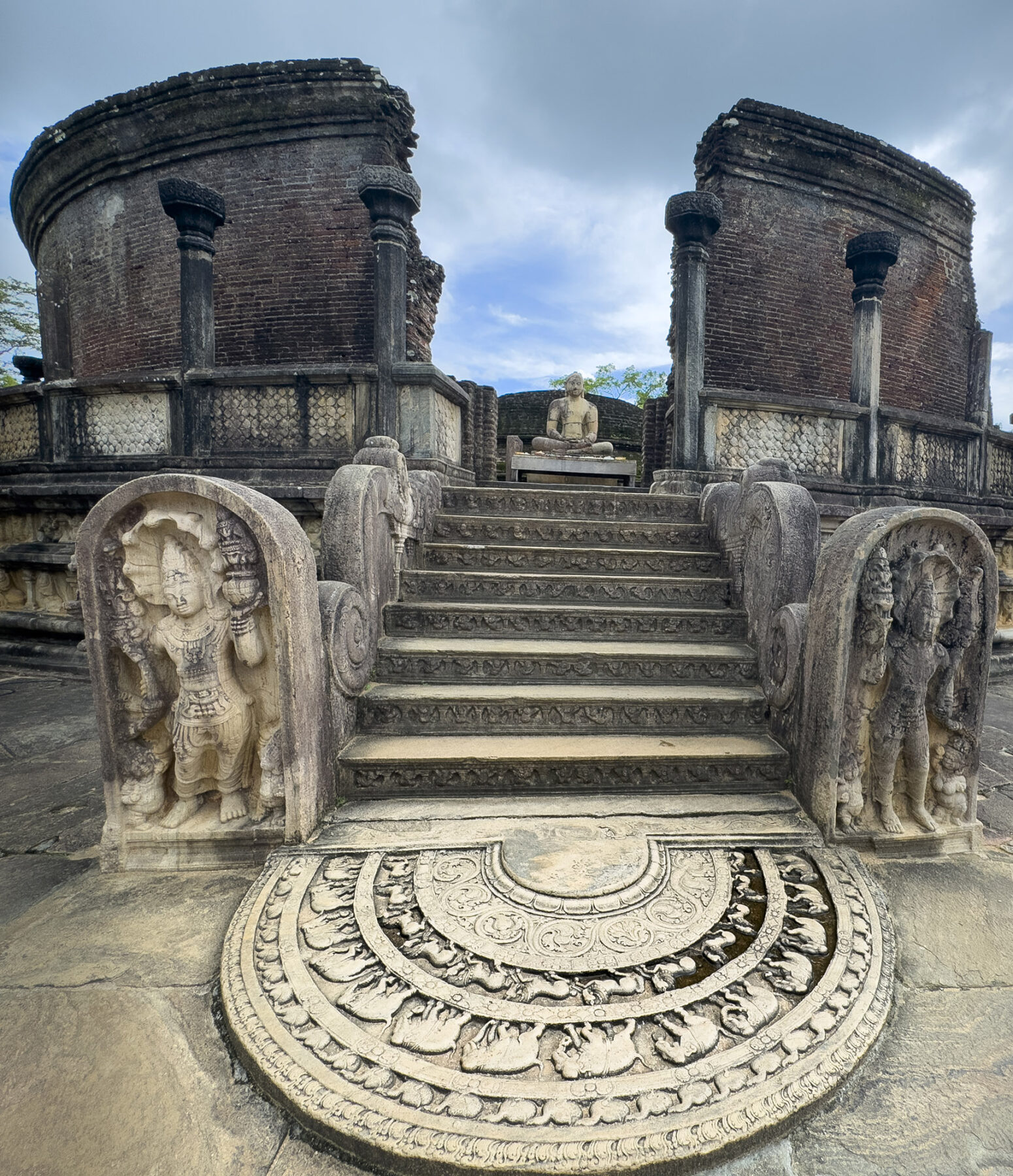
On another day we ride into the ruins of King Kasyapa’s royal palace sited atop an almost 400m granite monolith known as Sigiriya (Lion Rock). The self-entitled king, whose royal lineage was ‘tainted’ by spawning from a royal concubine rather than a queen, seized control of the kingdom after murdering his father. He reigned from atop Lion Rock for almost 20 years before being humiliatingly dethroned by his younger brother. All that remains of the royal palace, which was carved by hand into granite, are the foundations, an Olympic-sized swimming pool and a stone throne from which the king purportedly watched his 100 or so concubines dance. With the king’s demise, tranquillity reigned, and Buddhist monks moved into the caves within the monolith’s walls. Implausibly beautiful artworks once lined entire walls of these caves. Today, just a handful of exquisite frescos remain, which can be viewed by ascending a spiral staircase.
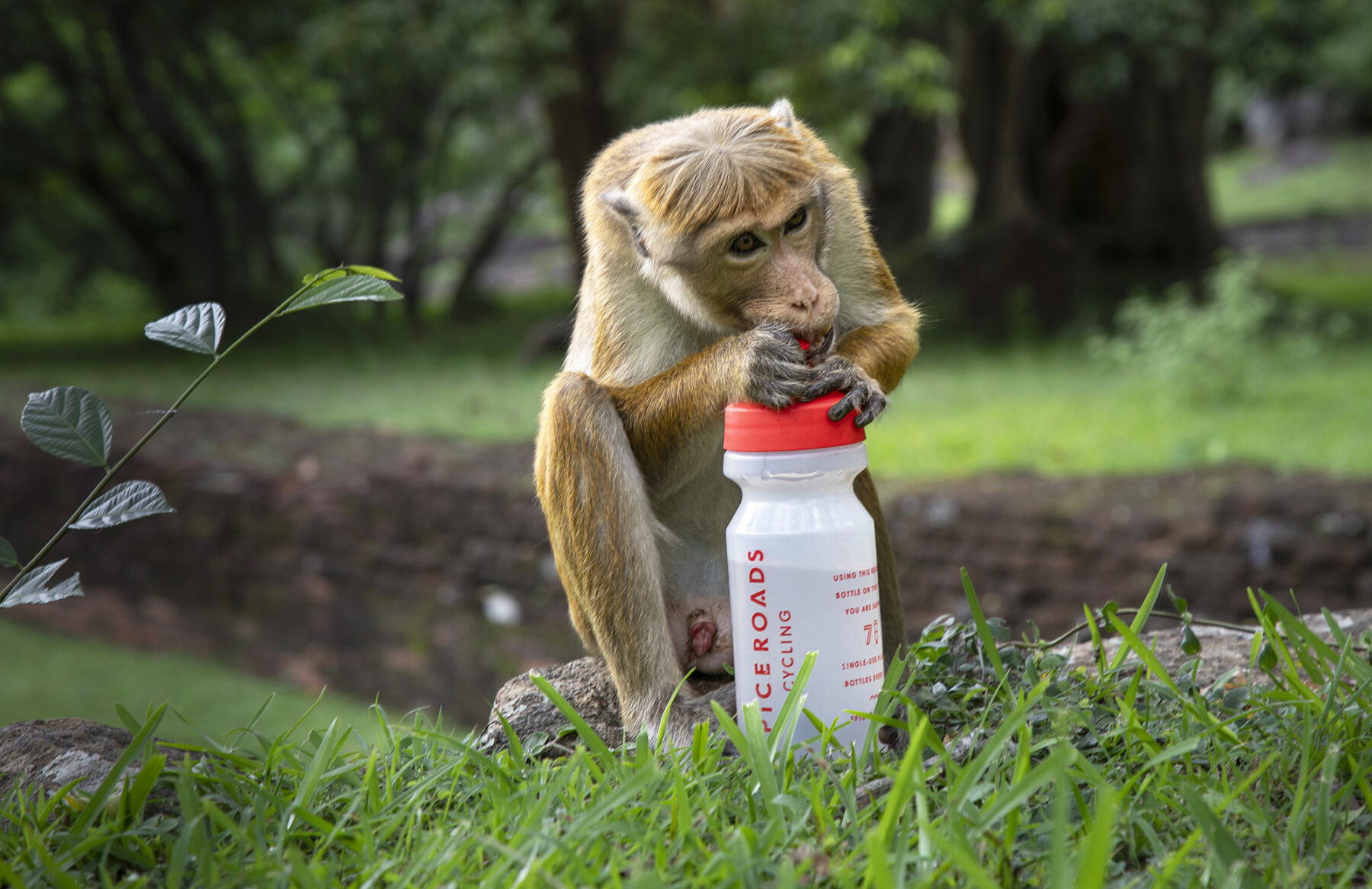
As we saddle up to leave Sigiriya, one of our group momentarily puts down his drinking bottle to take a photo of a toque macaque monkey. These adorable monkeys are native to Sri Lanka and are easily identifiable by their distinct ‘blunt cut’ whorl of hair, which looks like something from a hairdressing apprentice’s first attempt with the scissors. Anyone who suffered a humiliating ‘bowl cut’ as a child will know what I mean. Bill realises his mistake too late as the cheeky monkey snatches the drink bottle and scampers away protectively clutching its prize.
Here be giants
But it’s elephants I’m keen to see, and at Minneriya National Park we’re almost assured of seeing them. The 8890ha park is thought to have the world’s largest concentration of wild Asian elephants. But tumultuous rain tumbles down in near-solid sheets, seemingly dashing our hopes of seeing a herd as we drive through the park. Then, just as suddenly as it started, the rain stops, revealing savannah-like grasslands on the shore of a vast lake. Lumbering slowly along the foreshore is a herd of almost 20 elephants.
They shamble towards our jeep. The driver turns off the engine and we wait. Soon, they’re close enough to see tufts of wiry hair sprouting from the head of a wobbly-legged youngster who can’t be more than a few months old. As another jeep pulls up the herd close ranks around the juveniles, instinctively protecting the most vulnerable. But the inquisitive youngster is having none of it and darts out between adult legs before being nudged back into the safe fold of the herd.
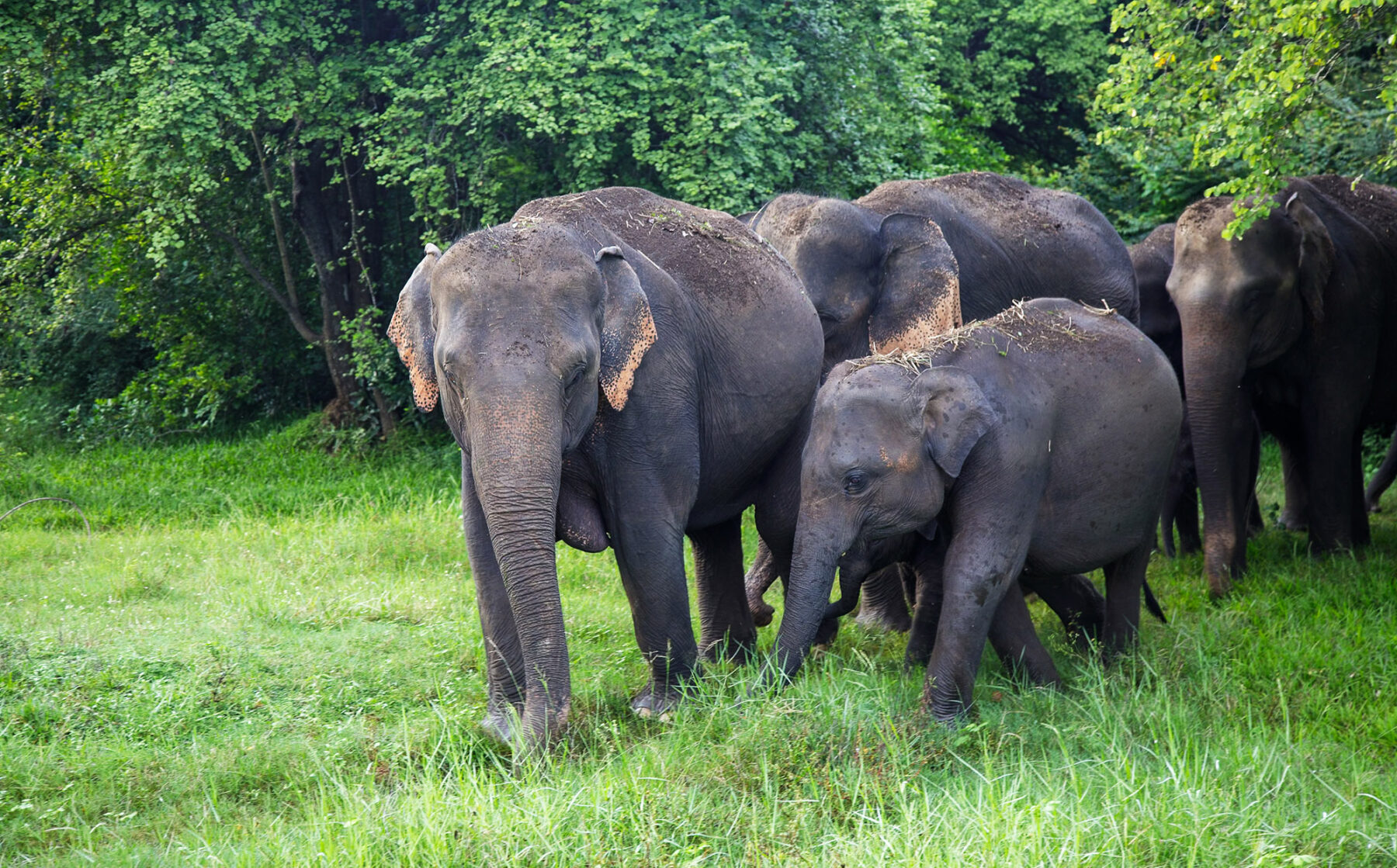
The World Wildlife Fund lists the Sri Lankan subspecies of Asian elephants as endangered, noting there are less than 4,000 in the wild. Long ago Sinhalese royalty captured and tamed wild elephants to be utilised in construction and in clearing land for agriculture. Elephants are still celebrated for their strength but are equally honoured in religious and cultural ceremonies. The annual Perahera Festival celebrates Buddhism and cultural rituals with a lively procession of more than 100 ornately decorated elephants marching through Kandy.
Elephant motifs appear constantly throughout the ancient ruins of cities and palaces. A metre-wide moonstone step at the base of a stupa is ornately carved with a line of elephants seemingly shouldering the burden of swans. Among the restored ruins of Anuradhapura, the first floor of the former council chambers is lined with intricate elephantine carvings. Etched tusk and trunk motifs are ubiquitous. Nearby, elephants were likely utilised to carry the 7m-long granite slab etched in centuries-old Sinhalese script telling the story of Buddha.

Everywhere we ride, elephants have left their mark, in many cases literally in trails of dung. During our most challenging ride, where the inclines seem endless, elephant dung appears with increasing regularity and freshness. Soon we’re rewarded, both with a sweeping downhill, but more significantly with a real live elephant. The excreter of all that poop ambles nonchalantly ahead of us, his tail swooshing in time with lumbering steps. I feel like crying. I’m thrilled to see this wild creature sashaying along, seemingly without a care in the world. It’s just reward for every inch of incline conquered.
The writer was a guest of Spice Roads Cycling. See Spice Roads Cycling for info on this and all of its other cycle tours.
